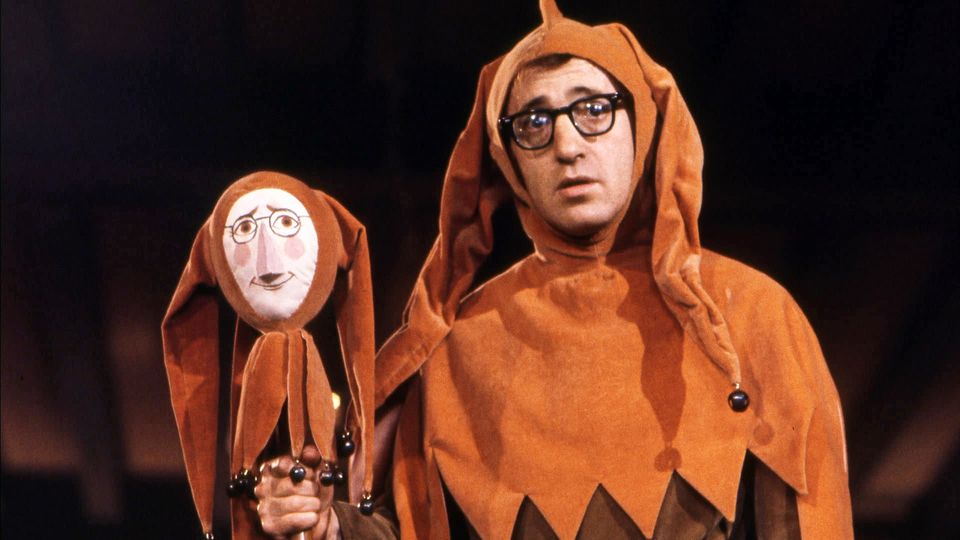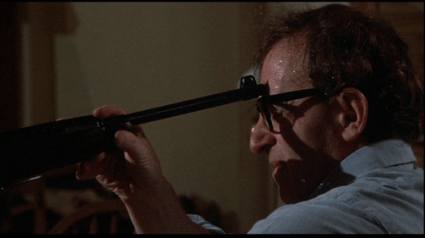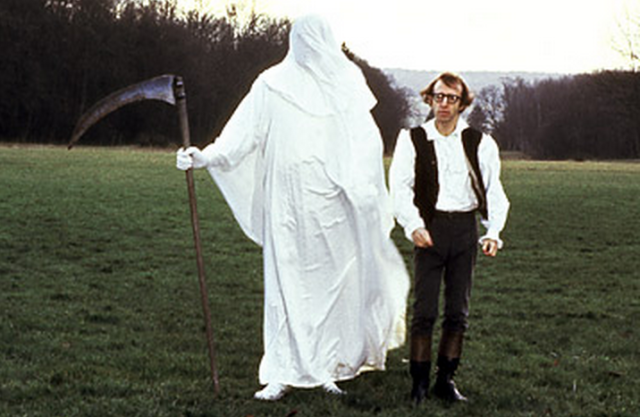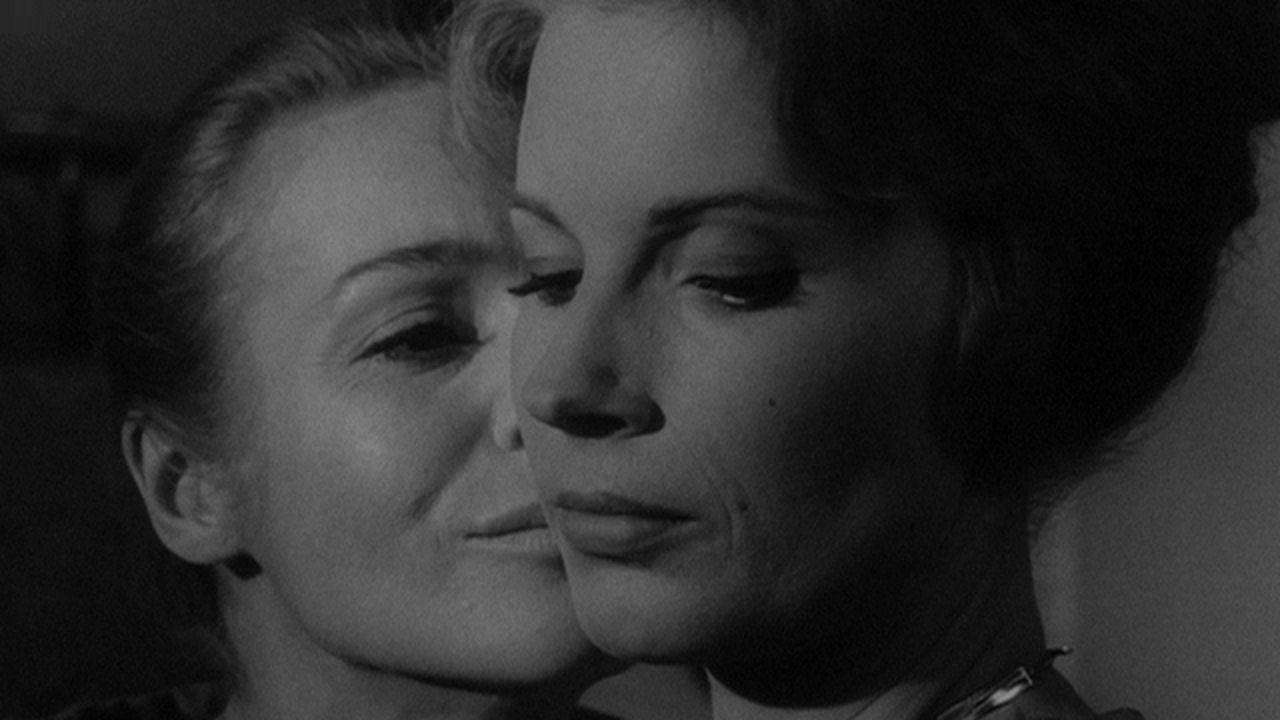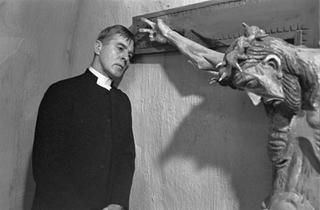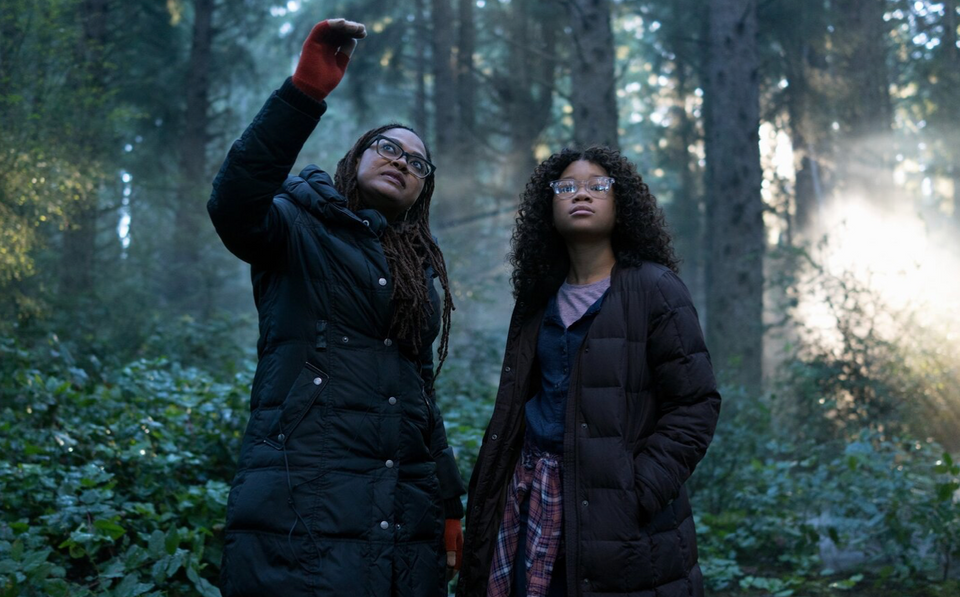A Jewish comedian from a poor Brooklyn neighborhood in the pre-World War II era (whimsically depicted in Radio Days), Woody Allen is self-taught film auteur and class-commentator on the relational and existential woes of wealthy Manhattannites.[1] New York City is Allen’s microcosm, captured in a playground of posturing, vain, highly-educated, WASPy Upper East Siders, producing neurotic, over-privileged and unhappy individuals.
It seems that Allen anticipated culturally synonymous notions of irony and cynicism in his postmodern analysis of self-consciousness in his late ‘60s and early ‘70s films. Part of Allen’s wisdom is his ability to show his characters acting out their selfish impulses only to later regret their decisions. This is particularly evident in relationships, where nostalgia for familiarity and acceptance cause collateral damage to the surrounding parties. His films are perpetual improv routines for why human selfishness and insecurity correspond with biological evolutionary urges and inescapable guilt.
Indeed, Woody Allen’s entire oeuvre is a masterful study of human relationships—in all of their messy infidelity, boredom, flippancy and perpetual dissatisfaction. Conversations provide the films’ architecture, as monologues and dialogues construct the form of his fifty some-odd pictures, through genres both tragic and comic. The stories across his massive body of work continually grapple with the interconnected themes concerning the ontological meaning of existence, particularly played out in ethically subjective matters concerning love and death.
Sy (Film Director): “The essence of life isn’t comic. It’s tragic! There’s nothing intrinsically funny about the terrible facts of human existence.
Max (Playwright): “I disagree. Philosophers call life absurd because in the end, all you can do is laugh. Human aspiration is so ludicrous and irrational. If the underlying reality of our being is tragic, my plays would make more than yours at the box office because my stories would resonate more profoundly with the human soul.
Sy: “It’s exactly that tragedy hits on the truly painful aspects of life so that people run to my comedies for escape! Tragedy confronts comedy.
This opening scene to Woody Allen’s Melinda and Melinda (2004) begins at Keith McNally’s former meatpacking district bistro Pastis, where four colleagues debate the essence of life, much like the four main interlocutors in the dialogue of Plato’s Republic. Is life comic or tragic? The rest of the Melinda and Melinda, as well as Allen’s entire film corpus attempts to diagnose an answer to that question. Should we be cynical pessimists or romantic optimists about human existence?
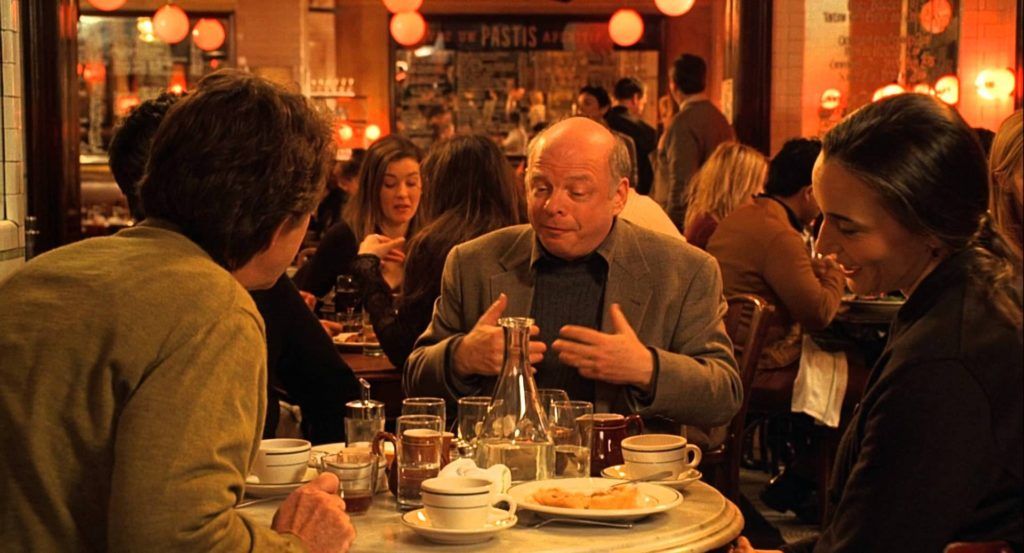
Aware that throughout history eastern and western philosophy have continually asked the same question, Allen considers two critical variables at play: one, the dynamics of objective reality including (but not limited to) the existence of God and the interconnected roles of religion, fortune and luck; and two, the subjective morality of humanity’s actions, often following from one’s convictions derived from the first category.
For all of Allen’s self-declared atheism, his filmography testifies otherwise to a lifelong series of attempts trying to outsmart the divine, rather than dismiss the existence of a God. In his nod to Fellini’s 8 ½, Stardust Memories (1980), when he is accused of being an atheist, he disagrees by responding that he’s “God’s loyal opposition.” Allen is directly affirming that he does believe in God, but he is fundamentally against, or at odds with, the structural tenants of organized religion—he is “God’s loyal opposition” onscreen. In fact, he’s storyboarding Nietzsche’s very ressentiment— the master-slave morality from his Genealogy of Morals, claiming that the Jews invented the morality system to overturn and lord the strong. Of course this plays brilliantly into Allen’s scrawny physiognomy, where wit and intellectual caprice captivate his ladies and thwart his captors, compensating for his lack of dashing Don Juan features. This hermeneutic of suspicion undermines Allen’s ability to conveniently accept normative religious claims as a tidy endeavor. Unlike Nietzsche, however, Allen does not accuse religion of manipulating and coercing humanity through the “invention” of an ethical system, but rather playfully challenges religion’s parameters by contesting the pliability of its dogmas.
Historically this cunning and playful figure, “God’s loyal opposition,” is found in the typology of “trickster”—an amoral and transgressive mythological character that challenges and complicates social mores through perceptive and crafty ways. In Lois Hyde’s Trickster Makes this World, he traces various cultural and literary tropes of the trickster (i.e. Coyote, Ishtu, Hermes, Thunderbird), connecting their typologies of wry inventiveness, scheming and innovation to modern artists that have implemented or drawn upon their signature characteristics. Self-diagnosed as a clown, Woody Allen participates in this trickster economy as the “jokester,” a liminal figure in world of the circus, wearing the various masks of hyperbole and comedy to class-critique the privileged by means of witty humor and laughter. The clown has the social power to cast the narrative of life as comic, wearing a mask to hide his pessimism in order to make people laugh. The sad clown motif, Pierrot, draws from Frederico Fellini and Charlie Chaplin, but also reaches back to Rabelais, medieval culture and Commedia dell’Arte, extending forward to the modernist paintings of Georges Rouault’s many clown figures that Allen slips as stock characters into many of his comic films: Everything You Always Wanted to Know About Sex* But Were Afraid to Ask (1972), Sleeper (1973), even the opera from To Rome with Love (2012) is Leoncavello’s Pagliacci.

Allen’s persistent resolve for evidentiary proof of God’s existence challenges the dogmas with which he was catechized as a young Jewish boy. He looks to the heavens for a sign, a miracle—a theophany of sorts. In mythology, the role of the magician figure as trickster, understands that the rules of the universe can appear to be altered through slight-of-hand, and, perhaps even manipulated by means of alchemy. Suspicious that established religion as a sham, Allen as the magician is interested in mystic, occult or chance-based phenomena as an alternative medium for a divine presence. Luck (Crimes and Misdemeanors), fate (Mighty Aphrodite, Match Point), fortune (Small Times Crooks) time-travel portals (Sleeper, Midnight in Paris), magicians (Stardust Memories), apparitions (Play It Again, Sam), tarot (Scoop) fortune-telling (You Will Meet a Tall Dark Stranger) mind-reading, hypnosis (The Curse of the Jade Scorpion, Alice), and séance (Magic in the Moonlight) play a rational role in Allen’s quest for numinous counsel from a Jewish Rabbi.

As a trickster, Allen plays both the clown and magician, the fool and the shaman, challenging the very framework and fabric of the universe by complicating binaries, transgressing boundaries and attempting to keep the gods accountable through his employment of tragicomedy. Allen’s filmic quest for ontological meaning and subsequent explanation of a moral imperative drives his narratives, and leads to films that work as ethical case studies, specifically around the actions of suicide and murder. Akin to situational ethics, Allen’s scripts debate if life is tragic or comic by directing and enacting tales concerning matters most grave (with a chuckle in between).
In Hannah and Her Sisters (1986), one of the subplots involves Allen’s character Mickey embarking on a religious quest, first toying with converting to Catholicism, followed by a fascination with Hare Krishna, eventually abandoning the whole endeavor by attempting suicide—hesitating only in case his suspicions are actually wrong. Fear often becomes Allen’s sole reason for refusing to pull the trigger. In Love and Death (1975), Boris (Woody Allen) and Sonia (Diane Keaton) discuss life’s absurdity if God does not exist. When Sonia declares that the only alternative is suicide, Boris recognizes the only thing holding him back is the chance they might be in error: “Well let’s not get hysterical. I could be wrong. I’d hate to blow my brains out and then [gesturing upward] read in the papers they found something.” We could say that the clown is still present in his nihilistic debates, a romantic existentialist who idealizes and fetishizes despair. Yet Allen infrequently muzzles his inner clown (particularly when he is not an actor in the storyline), and narrates the tragic, peeling the thin veneer of comedy back to show how fragile his constructed mask of optimism actually is. Whereas his earlier work maintains the genre of comedy to assuage Allen’s heavier questions, his most recent work (Blue Jasmine in particular) is quite austere in its straightforward resignation: “Anxiety, nightmares and a nervous breakdown, there’s only so many traumas a person can withstand until they take to the streets and start screaming.” A contemporary variation on the plotline of Tennessee Williams’ A Streetcar Named Desire, Allen’s female protagonist Jasmine (Cate Blanchett) collapses, a mirthless and bleak vision of the human condition.
Murder, on the other hand, is Allen’s second case study for subjective morality, and subsequent argument for tragedy being life’s sole genre. Ranging from Aeschylus’ Oresteia to Agatha Christie’s Murder on the Orient Express and Hitchcock’s Rope, Allen draws upon and engages classical variations of that age-old possibility: getting away with the perfect murder. If Allen is an atheist, then moral relativity would appear to be normative. But why, the trickster perpetually asks, is there a moral imperative to behave if there is no deity to judge or find us ethically reprehensible? This question is reminiscent of the discussion between Ivan and Alyosha Karamazov concerning the social ramifications of ethical subjectivity in Fyodor Dostoevsky’s novel, The Brothers Karamazov. Ivan’s central axiom “if God does not exist than everything is permissible” promotes absolute metaphysical freedom, regardless of whom it communally harms.
As an auteur continually haunted by this proposition, Woody Allen tests Ivan’s premise in three variations of the same plotline, tragic and comic, a trickster continually examining exceptions to the rules: Crimes and Misdemeanors (1989), Match Point (2005) and Irrational Man (2015). In Crimes and Misdemeanors, Allen’s re-envisions Dostoevsky’s Crime and Punishment where ophthalmologist Judah Rosenthal’s (Martin Landau) adulterous affair escalates from extra-marital rendezvous to arranging for his lover’s shady disposal. Allen is interested in the sliding scale from imagining a crime to acting on it, ironically depicting an eye doctor’s inability to discern or “see” the just and righteous action. Amidst administering an eye exam to Ben the Rabbi, Judah confides his dilemma to a man with escalating blindness. Tiresian-like in his ability to discern Judah’s existential crisis, Ben encourages Judah to confess and be reconciled with his wife, drawing upon a moral structure (“the eyes of God are always watching”), which Judah distrusts (“God is a luxury that I cannot afford”). The Rabbi probes Judah at the metaphysical level—if one is lucky enough to avoid discovery, can one even live with their conscience? Meanwhile, Judah is tormented with guilt, haunted by childhood memories around the Passover Seder dinner, hearing the words of his father: “Whether it is the Old Testament or Shakespeare—murder will out!” Yet Allen factors the variable of luck in the narrative not only by giving Judah a free pass, but also by miraculously assuaging his conscience through detached indifference.
Comedy provides a buffer from Allen’s probing critique in Crimes and Misdemeanors, yet he returns to this ethical case study of murder in Match Point, within the genre of tragedy-turned-Hitchcockian noir. Far from the usual fare of quirky play-on-words, Allen’s tenor is sinister and power-hungry. What if one not only follows through with one’s demented fantasies, but perpetually inflicts damage on non-associated parties just to cover the original crime? Set to the score of Verdi’s Othello and Macbeth, Chris Wilton’s (Jonathan Rhys Meyers) psychologically intense levels of lust, lies and cold compartmentalization build to the operatic heights of betrayal and murder. Yet unlike the rules within the world of the classical Greek tragedy, there is no reversal of fortune. Chris’s tragic flaw does not lead to his undoing, but propitiates his success. Tragedy in this sense is not only melodramatic, but also nihilistic. As trickster, Allen offers us a glimpse of evil with no hope of concession, a “confluence between fate and luck” in which the killer gets away.

However, in an Irrational Man, Allen reconsiders the possibility that justice might also be part of fate and providence, offering us a tragic tale reconfigured as a farce. His protagonist Abe Lucas (Joaquin Phoenix) is a philosophy professor teaching a situational ethics seminar on the end justifying the means, specifically in the case of murder (The name easily associates him with Abraham, the central biblical character of Kierkegaard’s Fear and Trembling). Haunted by a foreboding sense of life’s meaninglessness (in Kierkegaard’s phrase, “a sickness unto death”), Abe loses the will to live. Until, that is, the opportunity arises to commit a crime he has no motive for in which he can walk away hypothetically unscathed. However, in this case study, Allen does not let luck play a hand in Abe’s absolution. Fortune’s wheel rules in favor of retributive justice, as Abe accidentally falls down a broken elevator shaft as a slapstick tribute to karma.
The third film, I think, is the weakest in this murder triptych, not only in the execution of the film, but also in its dated idealization of nihilism. Left-bank existentialism isn’t culturally trendy like it was in Allen’s films from the ‘70s and ‘80s. Nietzsche and Jean-Paul Sartre are no longer in vogue and Allen appears to be trapped within the same philosophical predicaments, recycling conversations that seem repetitive rather than repurposed. As early as Manhattan (1979), Diane Keaton’s character Mary dismisses the romanticization of despair as childish. She naïvely adds Ingmar Bergman to her “Academy of the Overrated” list (alongside Gustav Mahler, Isak Dinesen, and Carl Jung): “His view is so Scandinavian. It’s bleak, my God. I mean, all that Kierkegaard, right? Real adolescent, you know, fashionable pessimism. I mean, The Silence. God’s silence. Okay, okay, okay. I mean, I loved it when I was at Radcliffe, but, I mean, all right, you outgrow it. You absolutely outgrow it.” Despite her misperception of Bergman as a self-indulgent nihilist, she is astute in underscoring “fashionable pessimism” as self-centered and myopic—a luxury coddled from a place of privileged white heteronormativity.

However, it is important here to note that Bergman is in fact Allen’s single most importance influence as well as his foil, nodding to him in Interiors (1978), with other allusions in Stardust Memories and Love and Death. At a first glance, the two directors are nothing alike—even in genre. Bergman’s minimal Scandinavian chamber dramas are painstakingly slow, beautifully lit, sparse in their dialogue, and particularly perceptive in their depiction of human emotion. In contrast, Allen is quick-paced in his rapid-fire banter and Punch and Judy slapstick, his clowning mischief and trickster shenanigans providing comedic distance from vulnerable reflection. Yet Bergman and Allen share an imagination formed by religious traditions that shapes their narrative approach to storytelling. Subsequently, both are fraught with existential dilemmas brought on by anxiety and disillusionment with religion.
Bergman’s so-called “God Trilogy” (Through a Glass Darkly (1961), Winter Light (1962), The Silence (1963)), utilizes high contrast black and white settings to highlight his figures like Giacometti sculptures that mirror silent landscapes of the soul—anxious, alone, confronted with the silence of God as a perpetual and exasperating answer. While Bergman is direct and frank about spiritual crisis, Allen returns to comedy as his mask of sanity, covering his disgruntled angst and restlessness. While there are a handful of films that Allen attempts serious excavations into the human psyche (Interiors, September, Another Woman), many have regarded them as failures due to their unpopularity with audiences, yet for Allen they were honest experiments at confronting life directly.
Bergman once lamented that art was fractured from a religious imagination, explaining that “art lost its basic creative drive the moment it was separated from worship. It severed an umbilical cord and now lives its own sterile life, generating and degenerating itself…”[2]
Both Bergman’s Lutheranism and Allen’s Judaism form their creative framework—it is something they cannot avoid. God’s loyal opposition could be said of both directors, whose art continually subvert pious and sentimental categories for God, disrupting neat and tidy delineations of religion’s parameters. We might even say that their work supersedes their own beliefs about the world compared to their film’s own witness of it.
Manhattan is certainly an example of this vision, and I think, Woody Allen’s masterpiece. Not only does it have sparkling performances and stunning black and white cinematography by Gordon Willis (evoking the freshness of Godard and Truffaut, with the sobriety of Bergman), but it also testifies to Allen’s true identity as a tragicomedian. Manhattan discloses his intrinsic and romantic belief in the world, while thoughtfully self-critical of his own narcissism and juvenile anxieties.[3] Allen’s most moving—perhaps believing—moments are when he encounters surprises and gifts that show up outside of the system he has critiqued. This thesis is attended to in Manhattan’s dramatic conclusion where the aptly named Isaac (Woody Allen) attempts to answer why life is worth living. Rather than embarking on a philosophical diatribe of abstract arguments, he lists the presence of artifacts, music and visual culture, that slowly turns into the presence of individuals: Cézanne’s pears and apples, the second movement to Mozart’s Jupiter Symphony, Swedish movies (Bergman), Louis Armstrong, Groucho Marx, Willie Mays —and ultimately—Tracey’s face.
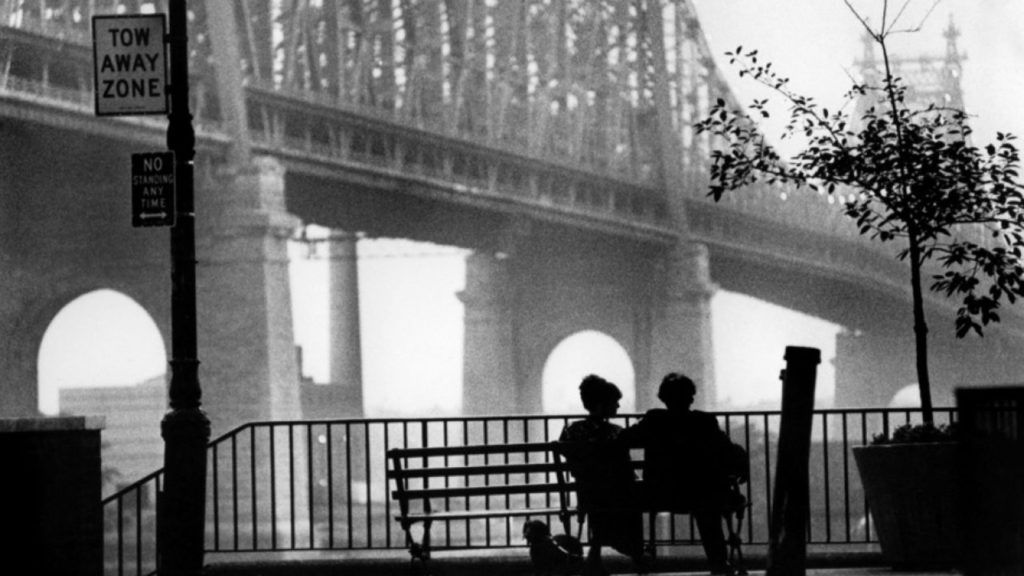
Another scene that echoes this end from Manhattan is when Allen’s character Sandy Bates shares a moment with his lover Dorrie (Charlotte Rampling) at the end of Stardust Memories. Narrated as a form of memoir, Sandy recounts the reasons that made that time together memorable. By archiving his surrounding phenomena, he attends to the “thereness” of things, moving from objects to subjects—the sound, the weather, finally, the face as meaningful and mystical presence. Though Allen cannot tell us why they are significant, he insists that they are. For Jewish philosopher Emmanuel Levinas, the face is the true mirror and trace of the Other (God), the physical proof of the presence Allen keeps seeking. Perhaps Allen’s truest testimony, in all his obsessive honesty and lifelong enactment of existential questions, is his faithful exploration of the icon he cannot shake—the human face—masked and unmasked in his perpetual circus.
Allen’s awareness of what is given, indeed, what is perceptively found, is a mosaic of the unnecessary. There he discovers seemingly excessive things that compose the critical aspects of human meaning. Allen seems to be unconsciously reaffirming Christianity’s doctrine of original sin in his entire cinematic cannon wherein which humans cannot escape perpetuating cycles of systemic damage. Though his comic tales are a testament to brokenness, they also highlight undeniable meaning derived from human relationships. Despite humanity’s innate selfishness, he shows us the possibility of richness and beauty underneath all the competition, something amidst the nothing. If this is the case, Woody Allen is no nihilist, but rather an astute detective questing after the truth.
In Robert B. Weide’s Woody Allen: A Documentary (2012), Allen confesses: “I’m cursed with the clown’s approach. I have always had to approach life in a comic way. I wish I had been born a gifted and great tragedian.” But perhaps Allen is both, as the trickster typologies would suggest, where clown and magician dualities blend to produce a tragicomedian. He cannot have one without the other; a signature characteristic of the trickster that upsets categorical boundaries relies on being a hybrid, a paradox. For life that was merely comic or purely tragic would be the true absurdity.
Thus for Allen, life cannot be absurd because it is a blend of the two overlapping genres. Alan Alda (as Lester in Crimes and Misdemeanors) emphatically insists: “Comedy is tragedy plus time,” or in the classical sense, a tale with troubled beginnings that ends with marriage. We might say then, in true Woody Allen tragicomic-fashion, that tales of rejection can become comedic as time creates distance for his characters to gain wisdom from their folly, and maybe even laugh.
[1] Caveat: This is not an apology for allegations towards Allen, nor is it unaware that they exist, however, the focus of this piece is on Allen’s cinematic works. It is nonetheless important to acknowledge that this article is not ignorant of the allegations.
[2] Bergman gave these opening remarks as a preface to the screen script in the introduction to his film The Seventh Seal, 1960.
[3] “He was given to fits of rage, Jewish liberal paranoia, male chauvinism, self-righteous misanthropy, nihilistic moods of despair. He had complaints about life but never any solutions. He longed to be an artist but balked at the necessary sacrifices. In his most private moments, he spoke of his fear of death, which he elevated to tragic heights which was in fact, mere narcissism” (Manhattan).

